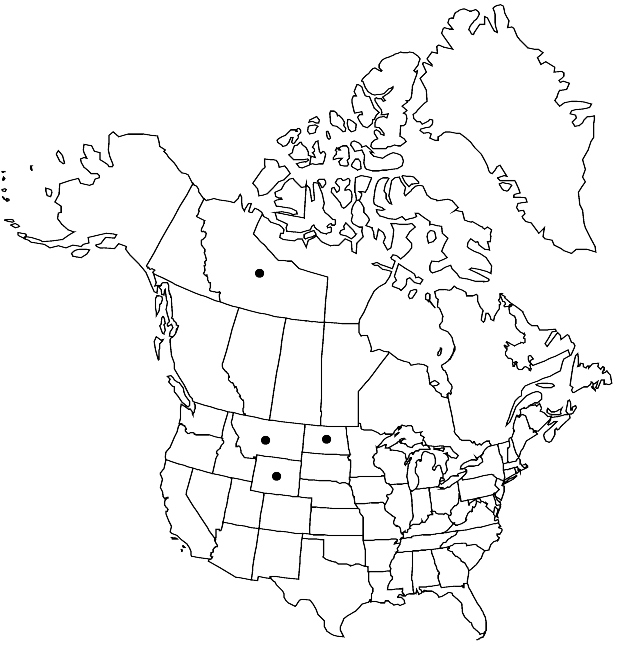Rorippa calycina
Mem. New York Bot. Gard. 1: 175. 1900.
Perennials; (terrestrial or of wet habitat, not submerged); densely hirsute throughout, (trichomes pointed, expanded basally). Stems (simple or few from base), erect to prostrate, branched distally, 1–4 dm. Basal leaves not rosulate; blade margins sinuate. Cauline leaves sessile; blade oblong to oblanceolate (lateral lobes oblong to ovate), 2.5–5.5 (–7) cm × 5–13 mm, base auriculate to amplexicaul, margins sinuate. Racemes elongated. Fruiting pedicels ascending to suberect, (somewhat appressed to rachis), straight or curved, 2–5 (–6) mm (glabrous or sparsely hirsute). Flowers: sepals (persistent after anthesis), ascending, oblong-ovate, 2–3.3 × 0.7–1.3 mm; petals yellow, oblanceolate, (2.2–) 2.5–3.7 × 0.7–1.4 mm; median filaments 1.8–2.2 mm; anthers oblong, 0.5–0.6 mm. Fruits silicles, straight, globose or broadly oblong, 2–4 × 1.5–2.5 mm; valves short-strigose; ovules 30–44 per ovary; style 1–2.5 mm. Seeds biseriate, yellowish, ovoid, 0.6–0.7 mm (0.4–0.6 mm diam.), colliculate. 2n = 16.
Phenology: Flowering May–Aug.
Habitat: Stream edges, sandy riverbanks, reservoir, pond, and lake margins
Elevation: 1000-2000 m
Distribution

N.W.T., Mont., N.Dak., Wyo.
Discussion
G. A. Mulligan and A. E. Porsild (1966) reported Rorippa calycina from Northwest Territories and suggested that it may have been introduced to Canada from the main species range in the United States about 4000 km south.
Selected References
None.
Lower Taxa
"elongated" is not a number."thick" is not a number."dm" is not declared as a valid unit of measurement for this property.